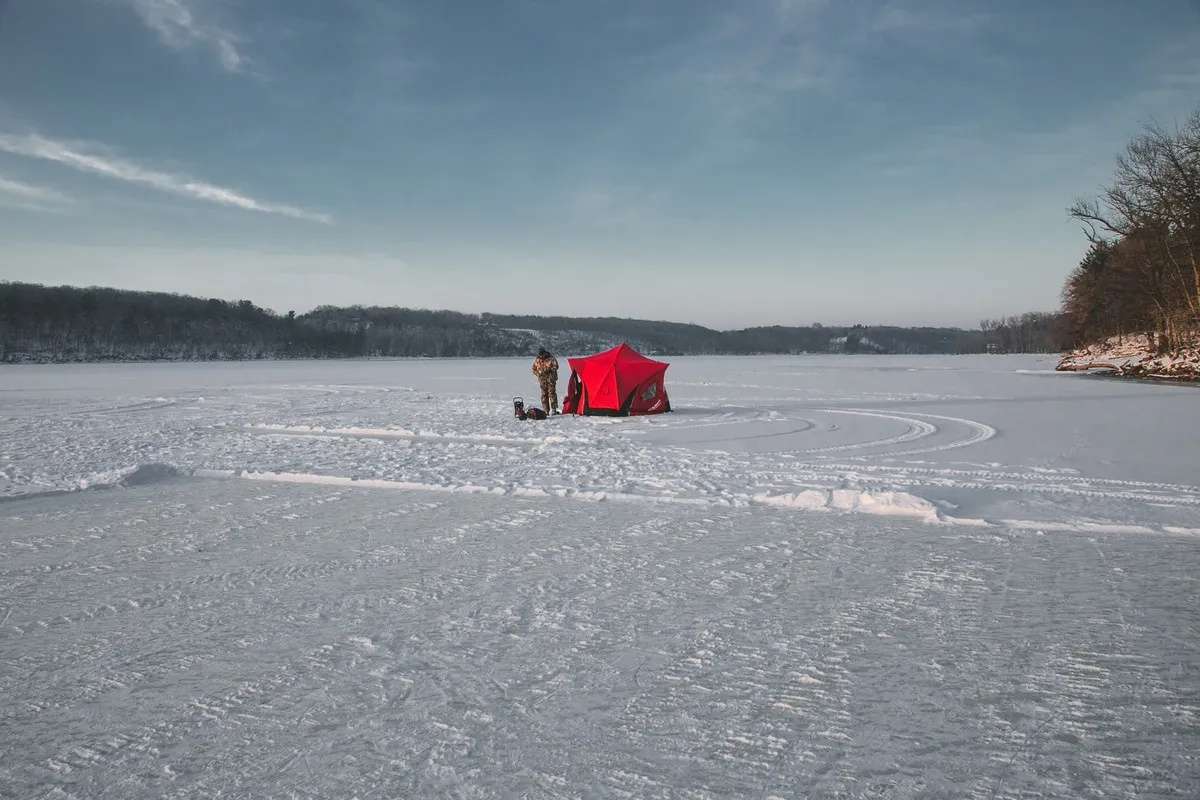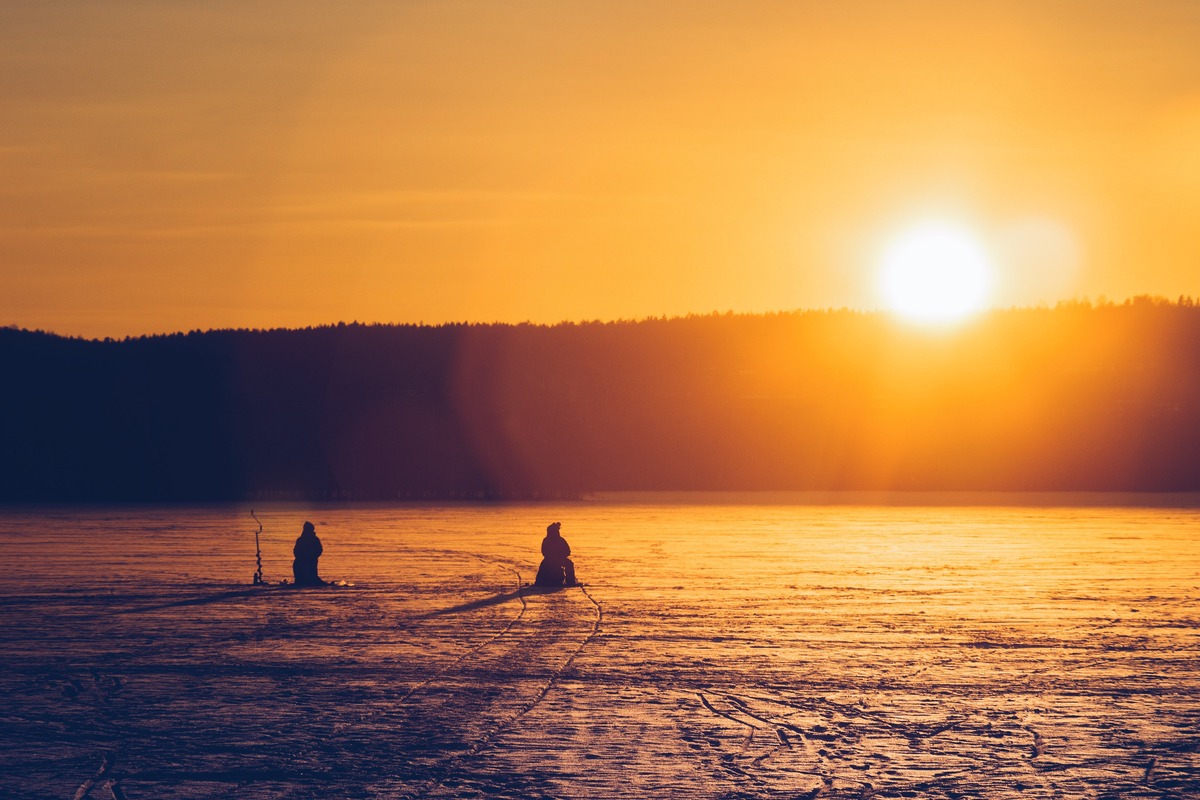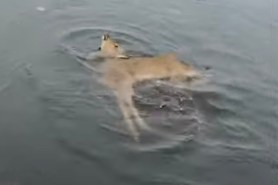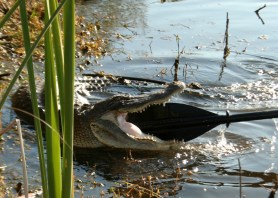

Camaraderie, light tackle, and catching huge fish on a small line—there is so much to be said about ice fishing. While it isn’t as popular as fishing in the warmer months, the ice fishing community is a welcoming one. Ice fishing alone has some positive merits from the serenity to the unique challenges to conquer. Here are some tips for those first times out on the ice.
Videos by Outdoors
Go With an Experienced Ice Angler

Considering the many ways to get into the sport of ice fishing, heading out with a guide or an experienced friend for those first experiences can help you stay safe. “A friend who knows his or her way around a frozen lake or hiring a guide—both could be great options,” said Max Kaufmann- Owner of Cougarbaits Fishing Lures and Owner of Tackle Shack Bait and Tackle. Tap into their knowledge and learn from the mistakes they have already made. “This will shorten your learning curve tenfold,” says Kaufmann who serves as the Director of Leadville Rod and Gun Club and Ice Derby Director.
No experienced friend? “If all else fails, hire a guide for a day or two,” recommends Kaufmann. “As guides like myself, we have put years on the ice and can help you figure out what to do. It can be very intimidating at first but a guide can help ease that learning curve. The most important thing is safety and having fun but without safety, you won’t have fun. So be careful and get those rods bent.”
Pick a Lake With Good Populations
The most successful ice fishing spots are lakes that aren’t spring-fed, deep ponds that are at least 10 feet deep, or other areas known for ice fishing. “Look at stocking reports of the reservoir or lake you want to fish to see what species are in the lake,” suggests Kaufmann. He also recommends looking at when the stocking happened to be sure that the fish are the size you are looking for. “Whether that is for eating(selective harvest) or for sport, fishing where the target fish is will always give you the best results.” Finding a place that is local and that you are familiar with can also ease those first-time nerves.
Know the Rules and Regulations for the Location You Choose
Before you even drop your line into the water, know the rules and regulations for the body of water you are fishing. Hopefully, you already have a fishing license from fishing in the warmer months. You should also know regulations from what bait you can use and whether the body of water is catch and release or if there is a daily catch total.
“Lots of lakes and reservoirs have different regulations depending on the class of water,” says Kaufmann. “For example, there are gold medal waters here in Colorado. That lake will have different regulations than other lakes. Some lakes even require barbless hooks. But it’s not super common here in the USA.”
Follow the Ice-Thickness Rules
- Under 4 inches — stay off
- 4 inches — minimum for ice fishing on foot
- 5-7 inches — one snowmobile or ATV
- 8-12 inches — one car or small pickup truck
- 12-15 inches — one medium truck
“These ice minimums are based on fresh clear ice,” cautions Kaufmann. “When cloudy try to stay off of [the ice] or travel with extreme caution.” Kaufmann recommends always using a spud bar (a long piece of steel with a tapered point at the end used to check ice thickness).
Remember, these are not hard and fast rules. Don’t guess or go by second-hand info. Test the ice yourself to stay safe.
Check the ice close to the shoreline first. Drill a hole with an ice auger. Make sure the auger blades are positioned on the ice. As you drill the hole, apply pressure. An ice scoop with a ruler can be used to measure the thickness. If the thickness and ice quality are good, continue to the desired fishing spot while continuing to measure along the way. Use a spud bar as you walk along the ice.
Many variables can impact ice conditions. Freeze and thaw cycles, water current, temperature, pressure cracks, and old ice holes are a few. Another safety tip Kaufmann suggests is watching out for hot spots. These are areas where the sun may have melted the ice.
“Sometimes snow patches will insulate the ice. This can make ice thinner and the weight of the snow can aid in making it weaker as well.” This is another reason to go with someone who has already experienced those first few times out.
Basic Equipment

These are some of the basic pieces of equipment you will want to bring with you. Perhaps rent or borrow some of these to see if ice fishing is something you will enjoy before you invest in the equipment on your own. Keep your gear simple to start with.
- Rod and reel: A 27-30-inch medium-light action rod with a spinning reel. Kaufmann recommends pairing it with a 4lb Berkley vanish line or 8lb to handle most species.
- Bait: This can vary, but from experience, Kaufmann says the easiest to use is a small flutter spoon, a small tungsten jighead with a wax worm, or a small 1/16thoz black hair jig by Cougarbaits fishing lures. Live bait is also good for beginners from wax worms to live minnows.
- Clothing: Float suit, waterproof boots, warm socks, ice cleats, insulated hat, and gloves (moisture-wicking layers are best)
- Spud bar
- Ice scoop
- Ice auger: “You can get a powered one, but you can get away with a hand-powered one,” says Kaufmann.
- Ice shack (preferably insulated)
- Propane heater and extra propane
- Needle nose pliers
- Extra: fish finder, topo, or online maps
“When you’re getting into ice fishing don’t be intimidated by the price tag of all the crazy nice gear coming out nowadays,” Kauffmann states. “You can have a heck of a day without lots of it, but make sure when you do buy gear it is quality. Winter is harsh and a few extra bucks here or there will save you the headache. Invest in some topo maps or online mapping as they will help you learn a body of water much faster.”
Time of Day and Month
The time of the day when the fish will be biting will vary depending on the weather. “The rule of thumb is if it’s sunny, fish early in the morning and deeper most of the day,” recommends Kaufmann. “When the sun sets, the fish shallow again. If it’s cloudy, fish shallow most of the day as fish will be more willing to feed shallow as the sun is harsh on their eyes and puts them in danger of predators.”
The first safe ice brings some of the best ice fishing when fish from walleye to pike haven’t slowed down their feeding yet. As it approaches the heart of winter, action begins to slow down from mid-January through February. As spring approaches, fish become more active eaters again. Late safe ice produces productive fishing again.
Be Open Minded
Just like with trying anything new, there is a learning curve. Mistakes will be made. Lessons will be learned, but you may find a new sport that keeps you outdoors in the winter. “Ice fishing for me is a special time of year,” says Kaufmann. “You can learn so much about a lake system and the fish that live in it by ice fishing because you learn small. What I mean by that is that ice fishing makes you learn how different sections of the lake fish and how the fish go about their day. It’s very interesting, and heck who doesn’t like to catch a big fish on a small rod.”
Start small and expand from there. “There is so much more to learn about ice fishing than just going out into the middle of a lake and drilling a hole,” says Kaufmann. “But all that comes with time.”









